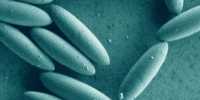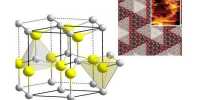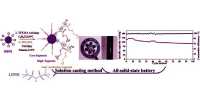Researchers in France have explained how this superhero national effect occurs at the nuclear level, according to the French National Center for Scientific Research (CNRS). It interacts with light-sensitive proteins, rhodopsin, chlorine, etc. in the retinas of our eyes, in a light-sensitive molecule used to treat this type of cancer. People receiving photodynamic therapy to treat certain cancers often report an unusual side effect. In addition to seeing strange shapes and silhouettes in the dark, many claim that they have acquired a lighter concept of “night vision”.
Depending on which part of the body is being treated, the photo-active agent (chlorine E6) is either inserted into the bloodstream through a bloody vein or applied to the skin, eventually entering the cancer cells. Photodynamic therapy is a treatment that involves light-sensitive medicine that is activated through light sources. Once a special light is spread on the affected area, the drug is “switched on” and it produces a chemical that kills the malignant cells.
It is well known that this process enhances the light sensitivity of the eye. Some photoreceptors in your retina, known as rods, contain large amounts of rhodopsin, a light-sensitive pigment that can absorb an active compound called retinal light. Retinol in the rhodopsin molecule responds to visible light, a process that is ultimately translated into visual information by our visual cortex.
It appears that the introduction of chlorine e6 explains the “night vision” effect, reacting to rhodopsin in the same way as infrared when receiving visible light. Under low light levels, most light is present at an uninterrupted level, not visible light, which explains why we cannot see in low light like a few other species.
This explains the increase in night-time visual significance,” chemist Antonio Monari, from the University of Lorraine in France, told CNRS. “Thanks to experiments conducted by biologists in recent years, we now know that the chemical structure of the retina under infrared light changes in the same way after injection (isomerization) of chlorine when it receives visible light. We did not know exactly how rhodopsin and its active retinal group interacted with chlorine. It is this mechanism that we have succeeded in elaborating through molecular simulations.
Researchers used algorithms and molecular simulations to model exactly how this complex biochemical process occurs, Reported in the Journal of Physical Chemistry Letters last year. According to their findings, chlorine e6 interacts with the oxygen present in the eye tissue after being “hit” by infrared radiation and converts it into an electrically excited state single molecule of molecular oxygen. This single oxygen enters the rhodopsin molecule and gathers alongside the retina, sparking isomerization as if it is receiving “normal” visible light.
Monari added, “Our super-calculators performed millions of calculations over the months before being able to simulate the entire biochemical reaction caused by infrared radiation. It happens in these hundreds of nanoseconds, which reflects the extreme complexity of these events.”














